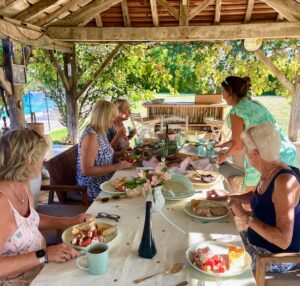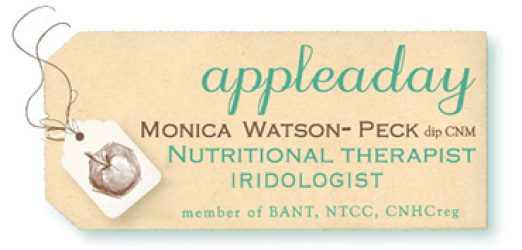When I was first studying naturopathic nutrition the term ‘community’ didn’t really come up in our studies. Back then it would’ve had a different meaning to now, more about shared geography, perhaps shared work or dependency, for instance ‘being part of a farming community’.
Then the meaning expanded to include shared causes and identities. Today it encompasses far more.
We’ve always been wired for connection, our survival historically dependent upon us working together, living in groups. Our nervous systems, in fact, see social isolation as a threat. It’s little wonder that in our current world, where isolation is endemic, the concepts of community and social connectedness have moved into the bright spotlight of the world of health.

Belonging can change our biology
If we feel accepted and have a sense of belonging it not only impacts our happiness or mental state but also our physical health. We all know that the brain doesn’t act as a separate entity, it works in synergy with our organs and systems. And yet, despite this ‘knowing’, it’s still fascinating to learn that a sense of belonging can literally change our biochemistry. Pain is reduced, inflammatory markers and blood pressure go down, our immune system is stronger, dementia risk lowers, we even live longer (Dan Buettner coined the term Blue Zones in his books, to describe areas in the world where people are reaching a ripe old age. Social connection plays a big part in their longevity).
How does in-group bonding make biological changes?
There are many different mechanisms in play, such as the rise in our feel-good endorphins and neurotransmitters, the lowering of cortisol, improvement of vagal tone and HRV, the down-regulation of CTRA a.o. but here I’m going to focus on just one fascinating compound.
When studying our endocrine system at college I was introduced to a hormone called oxytocin. It’s still one of my favourites in biology, not just because it’s called the love hormone, although that helps 🙂
Oxytocin plays a major role when it comes to trust and bonding. From sexual intimacy, childbirth and breastfeeding, to stroking your pet – and your cat purring back, because it, too, has this hormone. And when you get that warm buzz being hugged by someone, or hanging out with your friends, rising oxytocin is in the room.

I won’t go into the details of how we make and release this hormone, (and then release even more according to our body’s needs. So many feedback loops are working quietly and impressively behind the scenes). But in order to appreciate how oxytocin can make biological changes, here, below, are a few examples. I’ve kept it simple for all our sakes, I’m not a biologist or neuro endocrinologist!
Many of the papers I found used administered oxytocin, or were animal and not human studies. However, there is a lot of evidence and literature discussing the health-protective mechanisms of our naturally produced oxytocin.
Some ways oxytocin helps us
We have oxytocin receptors all over our body where this hormone can bind and exert various changes. One is in our blood vessels where it triggers the release of nitric oxide, a tiny, powerful molecule which a.o. relaxes blood vessel walls, widens them which results in lowering blood pressure.
In the brain, oxytocin acts on different regions to decrease our ‘fight-or-flight’ reflex (sympathetic nervous system), and increase our ‘rest-and-digest’ or ’rest-and-relax’’ reflex (parasympathetic nervous system). By doing this it lowers fear and anxiety, helps us feel safe. In this safe mode, this parasympathetic mode, our heart rate slows down and once again, blood pressure lowers.
Oxytocin also promotes the release of anti-inflammatory cytokines like IL-10. It also suppresses pro-inflammatory ones such as IL-6 and CRP (Szeto A et al. Pubmed. Front Immunol 2020). And it does more of the same from another direction: by supporting our parasympathetic nervous system it decreases cortisol, one of our stress hormones, which ramps up inflammation when it’s chronically high, eg. from ongoing stress.
As for our immune health, one way that oxytocin supports this system is by promoting tissue repair and wound healing. It does this by increasing our M2 macrophages, the white blood cells that clear debris and rebuild tissue. (Pfeifer et al. Pubmed, Mol. Pain 2020).
When our body is inflamed our immune system is weakened, so we become more vulnerable to illness and disease. Interconnectedness in body and mind, not just our social connectedness.
How can we naturally increase this wonder hormone?
There are so many different ways, which is heartening as we’re all very individual. Pets and hugging and breastfeeding don’t tick the box for everyone.
Bonding and community
Firstly (only as it’s the theme of this blog), through social bonding. Being with family, partners, friendly work colleagues, hobby groups, faith groups, yoga classes.…
Hanging out together, eating together, listening, talking, having eye contact, confirming trust. Not feeling isolated and lonely. These will all increase oxytocin levels.
And that warm feeling which rises when you’re helping a stranger or friend – even, amazingly, simply planning this act of kindness – is also triggering oxytocin.

Physical touch
Physical touch like hugging, cuddling, holding hands, all link to oxytocin’s important biological role for our species. Where would sexual intimacy, birth and motherhood be without this ‘bonding’ hormone?! Where would the close feeling of friendship be without a hug, and why do we feel so great after a relaxing massage! Lots of oxytocin thoughts to ponder.
Stroking pets will not only increase your, and your pets’, levels, but simply making eye contact with an animal you trust will signal affection in your brain and activate oxytocin release. Amazing! This is good reason why ‘animal-assisted therapy’ works.

Relaxation and mindfulness
Mindfulness, deep breathing, slow measured walking or dancing, being in nature, listening to music, all these are shown to lower cortisol and indirectly raise oxytocin. Moving away from the fight-or-flight sympathetic nervous system into the rest-and-relax parasympathetic.
In-group bonding
And then there’s collective effervescence, what a brilliant name! Coined by sociologist Emile Durkheim it describes the energy and jubilance, the goosebumps we feel during a shared experience, which trigger oxytocin release. This can be at a rock concert, demonstration, singing in a choir, or moving together at a yoga retreat. All of these, once again, are forms of social bonding, but with sparkling synchronicity. (PubMed Frontiers in Psychology, 2022)
Can we increase levels with our diet?
In short, no, there aren’t any specific foods which directly increase oxytocin. However, by eating for mood and brain health we support our hormones and nervous system, and indirectly, our oxytocin balance. Some good examples are foods or supplements with magnesium, nature’s ‘relax’ mineral, or tryptophan-rich foods (tryptophan being the precursor to serotonin), L-theanine (in tea), and adaptogens like rhodiola rosea or ashwaganda a.o. And, as always, avoiding highly processed and pro-inflammatory foods, that’s a given.
A final word…
I’m thinking about the feelings I’ve shared here on oxytocin. Undeniably, I’m in awe of this hormone, and awe in itself is an emotion which activates our parasympathetic nervous system. Lowering inflammation, strengthening our immune system, both of which are hallmarks of oxytocin.
Awe is also an emotion that’s often shared and heightened when we experience it as a group. So it seems a worthy addition to our social connectedness and bonding toolbox, don’t you think?
Note:
If you’d like to find out more about the importance of community and friendship for our health, there’s an excellent 2021 podcast, episode 226, from ‘Feel better, Live More’ which is a compilation of several episodes, which I think you’ll find uplifting and enlightening.
